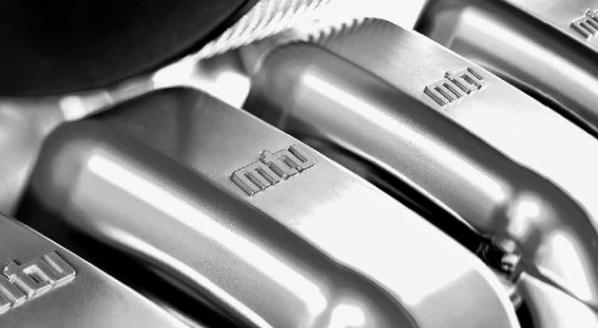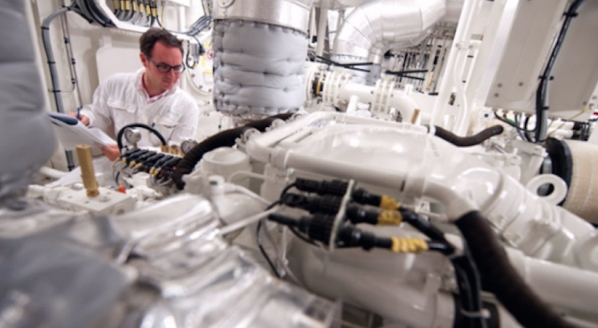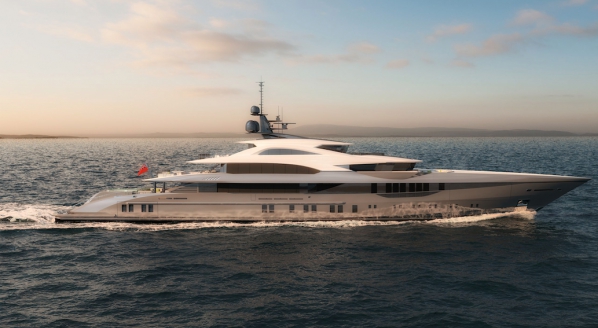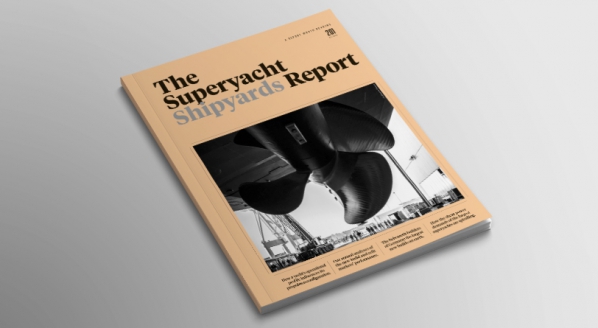Is the superyacht sector ready to switch over to hybrid power?
ABS' Daniele Bottino discusses the evolving regulations that supports low noise, lower emission dual fuel designs…
Designers and builders of superyachts face a significant challenge as they seek to reduce impact on the environment while maintaining the quality and performance standards demanded by owners. New generations of superyacht buyers are increasingly focused on solutions that protect the environment and when approaching their own yacht project are attracted towards solutions that can address this issue.
Increased efficiency in terms of lower emissions or reduced fuel consumption is a benefit that can easily be demonstrated to owners, charterers and guests alike. But to move to the next stage of sustainable superyacht operations requires more than compliance with IMO Tier III regulations; it reflects the need to progressively bring down reliance on the consumption of fossil fuels and increase the share of renewables.
As a result, designers and builders – especially of vessels around the 40-45m range – are investigating and engaging hybrid propulsion options including battery and fuel cell technology.
The main external driver to the steady trend away from traditional propulsion and towards different types of hybrid propulsion is fundamentally a response to the growing weight of public opinion on reduction of pollution emissions and protection of the environment.
New itineraries are also creating change. An increasing number of voyages into regions that would not otherwise be possible is also another reason for adopting new technologies.
Some highly-sensitive locations, such as fjords or other particularly sensitive sea and coastal areas have completely banned pollution emissions, meaning that only yachts that employ batteries or have propulsion systems that do not rely on conventional fuels, meaning that there are no limits for hybrid power yachts.
Finally, the desire for low noise operations that further reduce local environmental impact and increase comfort is another reason that has helped hybrid propulsion systems become more attractive and increasingly be included as a selling point by shipyards.
Using fuel cells or batteries for propulsion means that yachts can potentially leave port on battery power, producing no noise or air emissions. A reduction of main engine noise provides a quieter, more relaxing environment onboard the ship too. This also has benefits beyond the hull; marine noise from ships and boats is considered an increasing problem by conservationists for the impact it has on marine life.
Alternative Power
The are several solutions that combine alternative types of power generation and Energy Storage Systems (ESS) and which can be used to provide electricity-driven propulsion and electrical power to service loads. The combination of hybrid electric power systems also provides alternatives to traditional electrical plan configurations and allows vessel operators more options for optimizing the configuration to best serve the varied load profile during different modes of operation.
In broad terms a hybrid electric power system can be made of one or more of the following: conventional generation, Lithium-Ion (Li-Io) batteries, fuel cells, shaft generators and propulsion motors.
The integration of different sources of power and the combination of these with different energy storage technologies can be summarized as follows:
A. Conventional generators + Energy Storage Systems such as batteries and /or supercapacitors
B. Conventional generators + Fuel Cell Power Systems
C. Conventional generators + Shaft Generator
D. Conventional generators + Energy Storage System + Shaft Generator
E. Conventional generators + Energy Storage Systems + Fuel Cells Power System + Shaft Generator
In a superyacht application, the most common configurations currently are A and D, however there are several studies looking at configurations B and E but any of these configurations will meet all of the market drivers towards lower emissions and noise.
In the longer term, questions remain as to the lifecycle impact of battery technology on the environment since they are made from rare earths and cannot be recycled. However, at present, batteries are the only viable technology both in terms of price and performance.
Fuel cells offer a more sustainable option and appear to be the next in line in terms of technology availability but have the disadvantage of limited power intensity and higher cost.
Industry Projects
Hybrid power technologies offer multiple benefits for superyachts but take-up so far has been limited, with only a handful of hybrid vessels on the water or the drawing board.
Examples of innovation in the yacht building sector include Heesen’s series of 5000 FHDF hybrid class yachts. The first, Home, was launched in 2017, the second, Electra was due to undergo technical launch in April. Combining high performance with low fuel consumption, the design offers both diesel mechanical and diesel-electric propulsion, either source can be used independently or simultaneously to reduce noise and vibration and provide more flexible power management.
Italian shipyard Perini Navi is also investigating hybrid power on its E-volution class sailing yacht design which includes the option of hybrid propulsion within a contemporary design.
As with all relatively new applications, the challenge for designers is to ensure that the design is conceived correctly within a clear regulatory framework and a track record that can be used to optimize the design and meet safety requirements. While these technologies may be well established in other industrial sectors, specific ‘marinised’ applications may be relatively new and therefore not completely proven or well understood.
The challenges for classification societies are the direct consequence of the need to establish that the correct standards and regulatory references are as explicit as possible. In particular, some accidents – notably on car ferries - and have created a risk perception around the use of batteries, so the safety aspects must be regulated with mandatory prescriptive requirements in the applicable Rules related to certification, testing and installation – with the same also applicable for other energy storage systems.
The embrace of hybrid power technology cannot be undertaken effectively without a close relationship to the chosen class society. ABS is in the process of releasing its first Guide for Hybrid Electric Power Systems for the Marine and Offshore Industry that will introduce a dedicated notation for yachts featuring hybrid propulsion.
The Guide will focus on the integration of these new technologies in combination with conventional power generation in order to form a Hybrid Electric Power System, providing a common Notation where multiple technologies are combined to produce a hybrid electric vessel.
The Guide follows the previous publications: the 2017 ABS Advisory on Hybrid Electric Power Systems and the 2018 Guide for use of Lithium Batteries in the Marine and Offshore Industries, updated in 2020.
As superyacht designs continue to evolve, so does the regulation that will enable designers and builders to safety adopt innovations like dual fuel and pass on the benefits to owners and the wider society.
Profile links
NEW: Sign up for SuperyachtNewsweek!
Get the latest weekly news, in-depth reports, intelligence, and strategic insights, delivered directly from The Superyacht Group's editors and market analysts.
Stay at the forefront of the superyacht industry with SuperyachtNewsweek
Click here to become part of The Superyacht Group community, and join us in our mission to make this industry accessible to all, and prosperous for the long-term. We are offering access to the superyacht industry’s most comprehensive and longstanding archive of business-critical information, as well as a comprehensive, real-time superyacht fleet database, for just £10 per month, because we are One Industry with One Mission. Sign up here.
Related news

The Superyacht Propulsion Report
In collaboration with MTU, we analyse the impact of changing emissions regulations on the superyacht industry
Technology

IMO Tier III deadline - now just nine months away
We ask the industry what is in place and what is left to be done
Technology


Efficiency and flexibility is key
An increase in global energy demand signals urgent need for eco-friendly power generation
Technology

Propulsion for performance
SuperyachtNews speaks to Baltic Yachts about its innovative retractable propulsion system
Technology

The Superyacht Shipyards Report: out now
The Superyacht Group has focused on the true building blocks of the industry, the shipyards
Business
Related news
The Superyacht Propulsion Report
6 years ago
Considerations for the future
6 years ago
Efficiency and flexibility is key
6 years ago
Propulsion for performance
6 years ago
The Superyacht Shipyards Report: out now
6 years ago
Controlling underwater noise
6 years ago
Heesen sells second hybrid superyacht
6 years ago
The future is not just electric
6 years ago
NEW: Sign up for
SuperyachtNewsweek!
Get the latest weekly news, in-depth reports, intelligence, and strategic insights, delivered directly from The Superyacht Group's editors and market analysts.
Stay at the forefront of the superyacht industry with SuperyachtNewsweek





